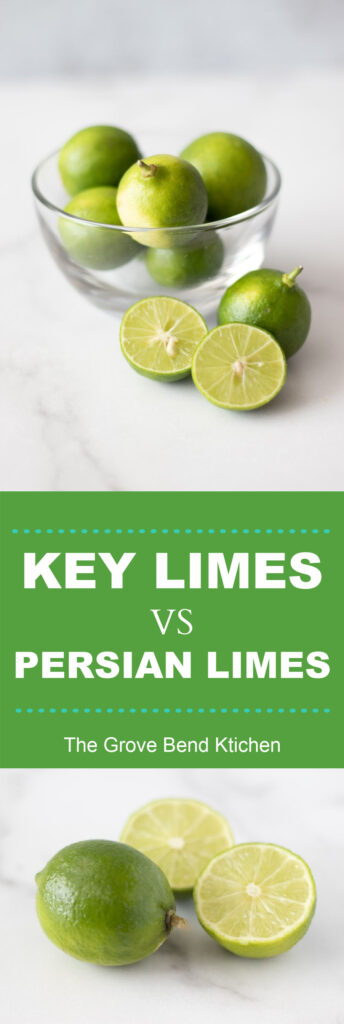Maybe you’ve seen these tiny limes and wondered, “What are these?” What’s the difference between Key Limes and Persian Limes? Fortunately, they can be used interchangeably but there are some differences that you should know about.
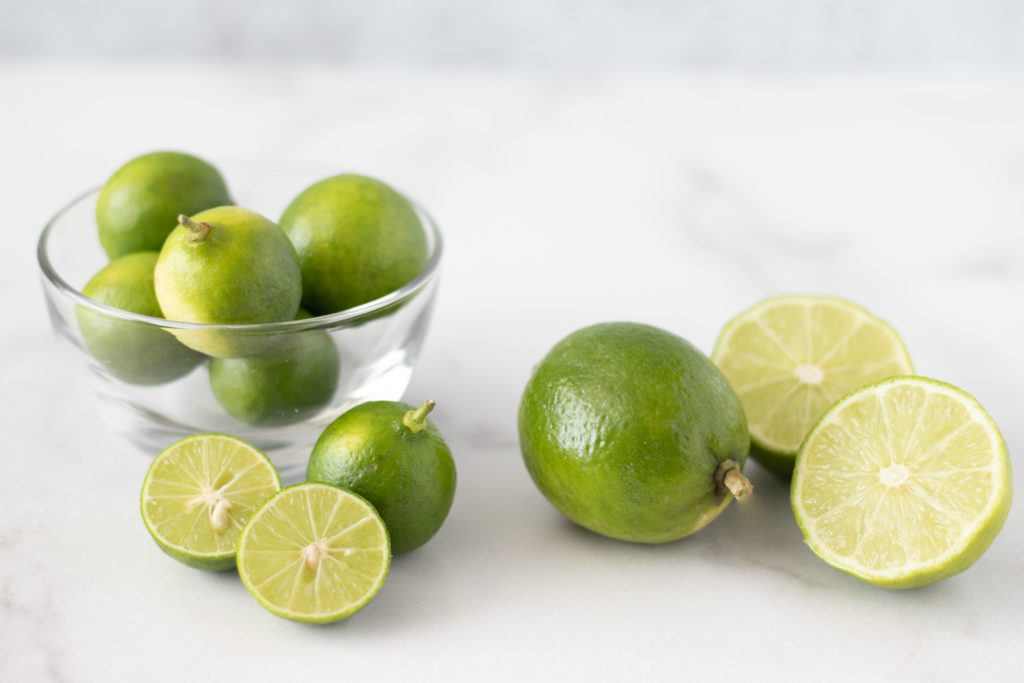
WHAT IS A KEY LIME?
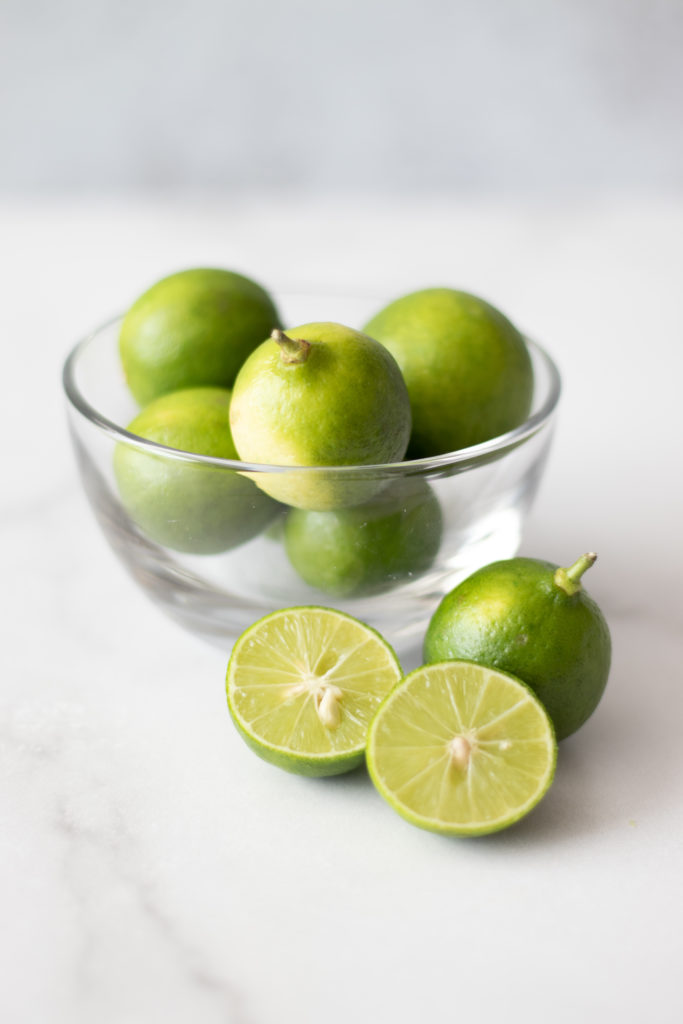
Key Limes are hybrid citrus fruits that are almost perfectly spherical and the size of a golf ball, about 1 to 1 ½ -inches across. The fruit is sold when it is bright green which is actually the immature fruit, making it more acidic and tart. As it ripens, it turns yellow losing some of that acidity. Key Limes have thin skins but feel heavy for their size and most will have seeds. They are more tart and bitter than other types of limes but have a slightly herbal-floral aroma that make them unique.
Key Limes are also known most commonly as “Mexican Limes” or the “West Indies Limes”. They are actually currently more common in the rest of the world and widely used in Asia, Latin and South American, and Europe. It is mostly used for its citrus juice for marinades, dressings, desserts, and drinks.
HISTORY OF THE KEY LIME
In the mid-1800’s Key West, the southernmost city in the United States, had no access to fresh milk because the Overseas Highway wasn’t built until 1930. Residents in the Keys used canned sweetened condensed milk, invented by Gail Borden in 1856. Key Lime plantations were everywhere at the time and the two ingredients became the perfect pairing. The acidic-bitterness of the Key Lime cut the intense sweetness of sweetened condensed milk. This pairing was the beginning of the invention of the famous Key Lime Pie from the Florida Keys.
A 1926 hurricane wiped out the Key Lime plantations in the Florida Keys. Most growers replanted the heartier Persian Lime. In comparison, Persian Limes have no thorns, making them easier to pick and thicker skins that don’t bruise so easily. The Persian limes also produced more juice which many buyers wanted so they could make frozen juices with the limes. Many Key Lime Pies are made today with the Persian Limes which lack the aroma and tartness of the Key Lime.
The Persian Limes are the “conventional” limes that most US Americans find in their grocery stores, but since the Hispanic population has grown in the US there is a new demand for the key lime. Most of the Key Limes sold commercially in the United States are grown in Mexico, Texas, Florida, and California.
WHAT IS A PERSIAN LIME?
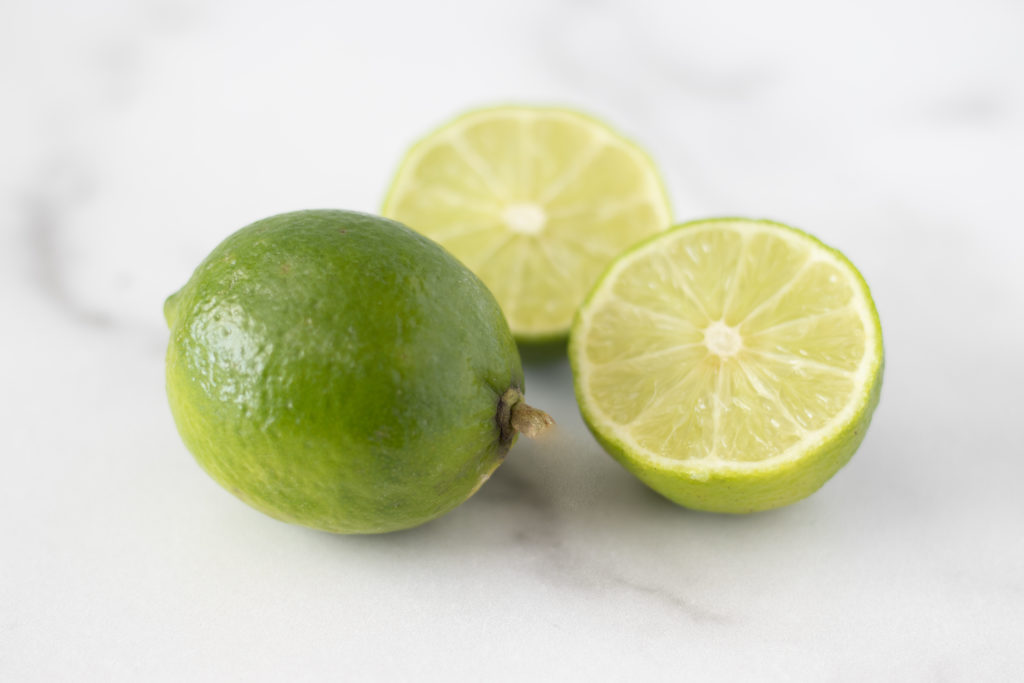
Persian Limes, also known as Tahitian or Bearss Limes, are hybrid citrus fruits that are a cross between a Key Lime and Citron. It is an oval shape with a pointed end, usually 2 to 2 ½-inches wide and 3 to 4 inches long. The fruit turns yellow when mature but is sold immaturely when it’s a bright green for its acidity. They are seedless with thick skins and have a longer shelf life than their smaller counterparts Key Limes.
Persian Limes are the most commercially sold limes in the United States. They are less bitter but don’t have the aromatics of the Key Lime. Mexico is a large supplier of Persian limes to the American, European, and Asian markets, producing about 95% of the crops.
HISTORY OF THE PERSIAN LIME
The exact origin of the Persian Lime is unknown but it is believed to be introduced to the Mediterranean region from Persia (now called Iran and Iraq). Early Portuguese traders most likely brought it to Brazil, then Brazilians exported the limes to Australia. Between 1850 and 1880, Persian Limes were brought to California via Tahiti, hence the name “Tahitian Lime”, and by 1883 it was brought to Florida. It became largely popular to Florida citrus growers by the 1950’s because of the limeade concentrate development.
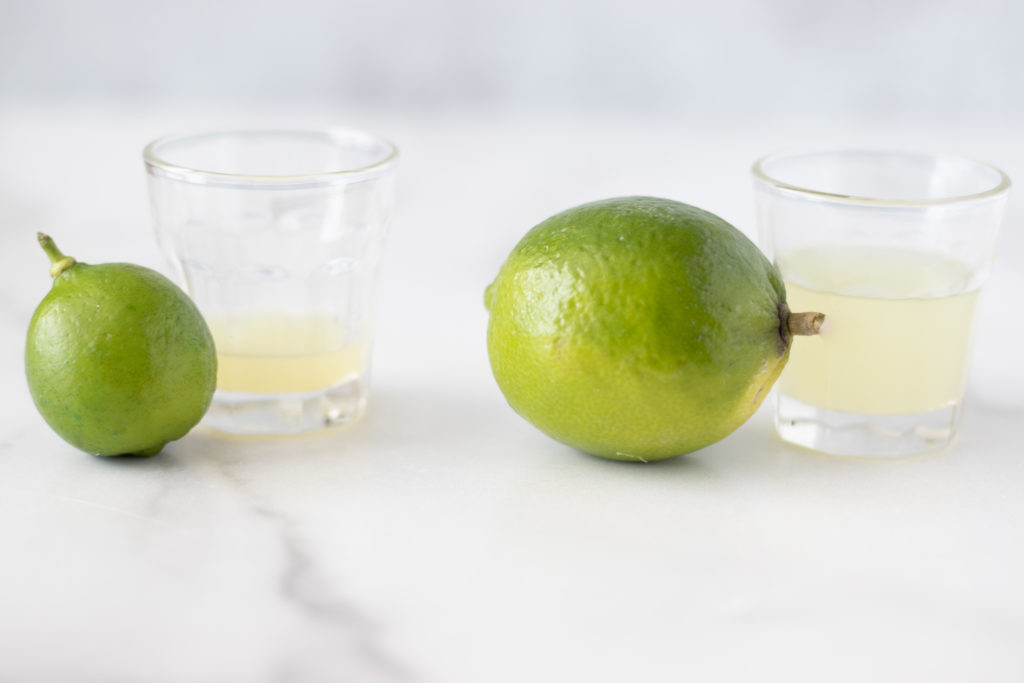
Key Limes = 2 to 3 teaspoons juice vs Persian Limes = 2 to 3 Tablespoons juice
THE BEST WAY TO STORE LIMES
Limes are non climacteric fruit meaning they continue to ripen after harvest. They don’t deteriorate as quickly as other fruits such as apples or pears. The best way to store limes is to keep them chilled and protected from air in Ziploc bags for up to 4 weeks. Vacuum sealed bags are a great way to preserve them for almost 2 months in the refrigerator.
Zested limes need more protection because the oil in the zest protects the fruit from drying out. Wrap zested limes individually in plastic wrap, put in a ziploc bag and chill in refrigerator. Freeze leftover zest in a freezer Ziploc bag for up to 3 weeks. It might lose some of its color but it will still have flavor. The juice can be frozen in small quantities, such as in tightly wrapped ice cube trays, but it will lose some of its pungency.
TRY THESE RECIPES THAT USE LIMES:
Sources:
Apple, R. W. “National Origins: South Florida; In Sour Splendor, The Real Key Lime Still Rules.” The New York Times, The New York Times, 10 Dec. 1997, https://www.nytimes.com/1997/12/10/dining/national-origins-south-florida-in-sour-splendor-the-real-key-lime-still-rules.html.
Bagott, Jeremy. “America Is at the End of the Lime”. The Wall Street Journal, 02 May 2019, https://www.wsj.com/articles/america-is-at-the-end-of-the-lime.
